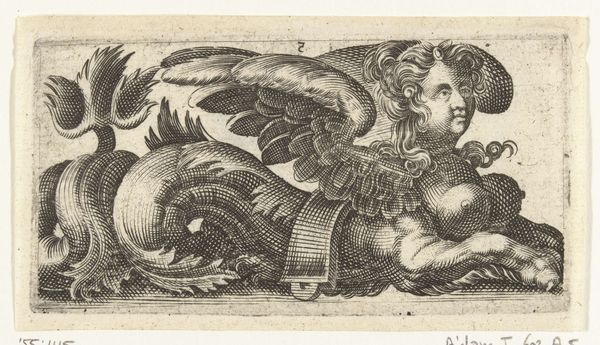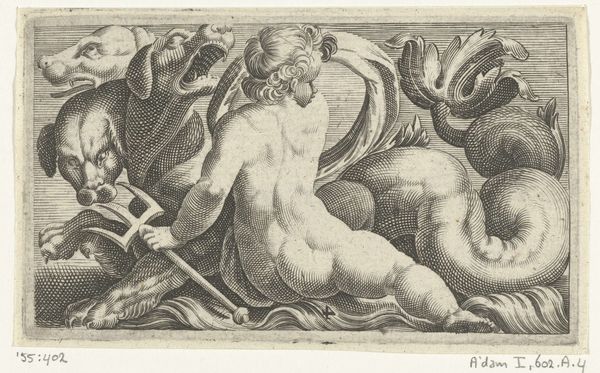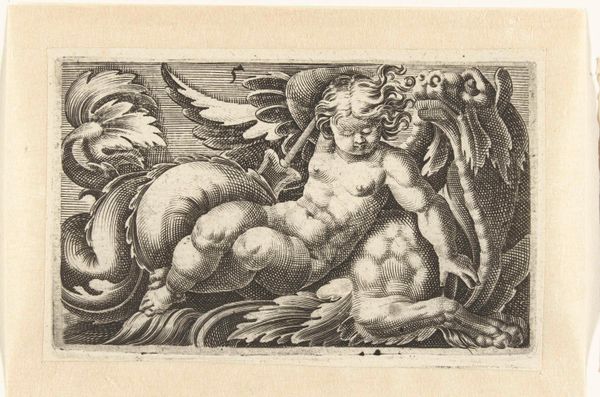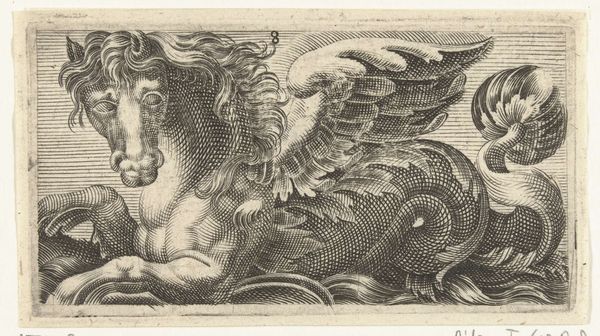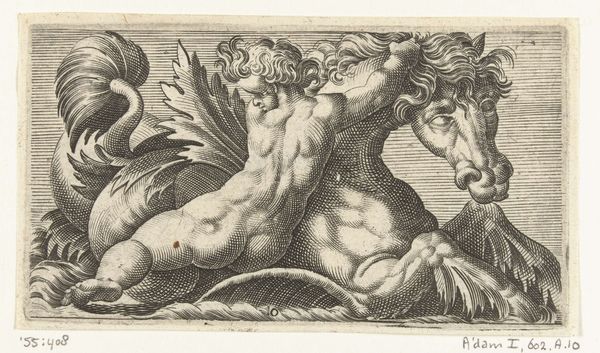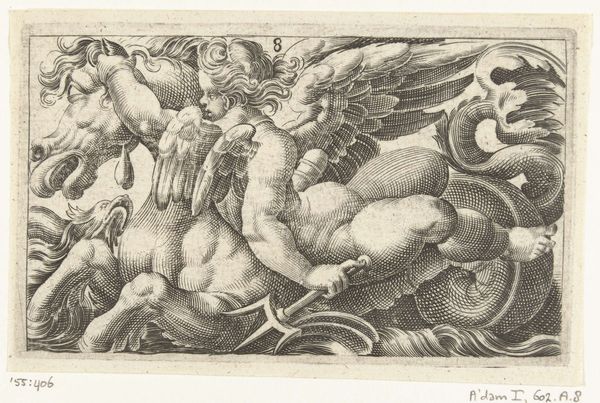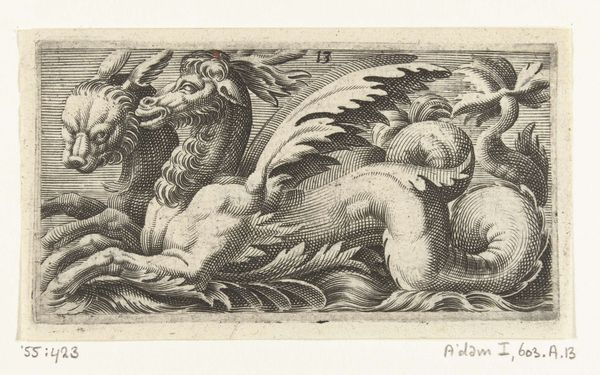
print, engraving
#
allegory
# print
#
mannerism
#
figuration
#
genre-painting
#
engraving
Dimensions: height 60 mm, width 109 mm
Copyright: Rijks Museum: Open Domain
This print, "Putto, gezeten op zeewezen met de kop van een griffioen" was made by Adam Fuchs in the late 16th or early 17th century, crafted using engraving. During this period, Europe was undergoing significant transformations influenced by the Renaissance and the Reformation, impacting social norms and artistic expression. Here, we see a chubby cherub – a putto – riding a strange sea creature. This imagery may seem whimsical, but let's consider its context. Putti, often associated with love and innocence, were also symbols of wealth and power, frequently adorning the art of the elite. The hybrid creature, part fish, part griffin, speaks to a fascination with the monstrous and the marvelous. Consider the emotional weight carried by these symbols: the cherub, a figure of idealized youth, contrasts with the fierce, fantastical beast beneath him. What does it mean to place innocence atop untamed power? This print invites us to reflect on the complex interplay between power, innocence, and the narratives we construct around them.
Comments
No comments
Be the first to comment and join the conversation on the ultimate creative platform.


